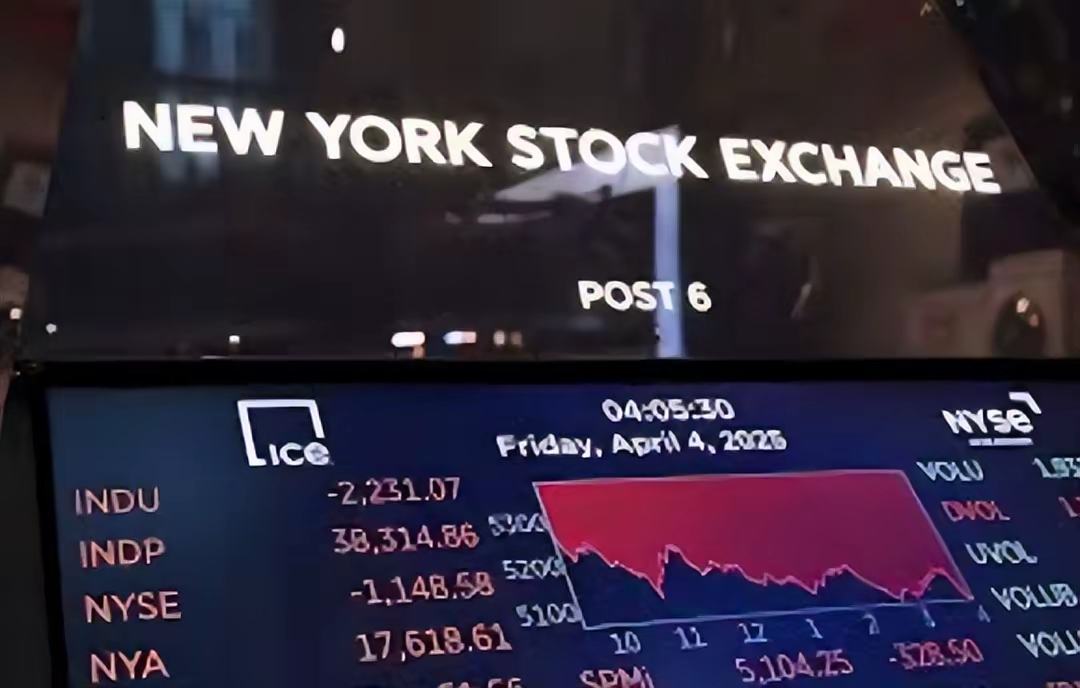
Recently, a series of developments in the US financial market have attracted global attention, especially the series of economic policies implemented by the Trump administration, which have had a profound impact on the US financial market, causing it to face many uncertainties and challenges.
Since Trump's return to the White House, the adjustment of his economic policies has become an important trigger for financial market volatility. In terms of trade policy, the "reciprocal tariffs" policy announced by the Trump administration is like a giant rock thrown into a calm lake, stirring up a thousand waves. The implementation of this policy has plunged the US financial market into turmoil. From the perspective of the stock market, the Nasdaq market, where US stocks, especially technology stocks, are concentrated, has experienced a significant decline. Previously, the US stock market has hit record highs for many times, and high-tech enterprises such as the "Seven sisters" have high valuations. However, with the introduction of the new tariff policy, the market pattern has been broken. The tariff war has led to a decrease in the expected growth rate of the US economy, and the fundamentals of listed companies have weakened accordingly. The expected decline in corporate profits has dampened investors' confidence in the stock market, causing funds to withdraw from the market and putting downward pressure on the stock market.
The bond market has also been impacted. The interest rate of long-term US treasury bond bonds rose rapidly. Investors worried that the "re inflation" of the US economy would lead to a rebound in long-term interest rates, which would further increase the pressure on the US government to repay the principal and interest, and increase the interest cost of newly issued treasury bond. The expectation of other sovereign investors to reduce their holdings of US treasury bond also made the US treasury bond market face the dilemma of declining demand, further pushing up the interest rate of treasury bond. The instability of treasury bond interest rate increases the investment risk of the entire bond market, and investors become more cautious in bond investment.
At the same time, the US dollar exchange rate has also been affected by tariff policies. The trend of the US dollar index has become confusing. On the one hand, the damage caused by the tariff war to US economic growth may ultimately lead to a weakening of the US dollar exchange rate; On the other hand, the short-term impact of tariff policies on inflation and other factors may cause a rebound in long-term interest rates in the United States, driving the rebound of the US dollar index. This uncertainty has made investors in the foreign exchange market hesitant about the US dollar, and the position of the US dollar in the international currency market has also been questioned to a certain extent.
In terms of financial regulation, the White House has also made significant moves. Starting from next Monday, independent agencies such as the Securities and Exchange Commission (SEC), the Commodity Futures Trading Commission (CFTC), and the Federal Deposit Insurance Corporation (FDIC) will be included in the regulatory scope of the White House. The rules of the Federal Reserve as a banking regulatory agency also need to be submitted to the White House for review. The Consumer Financial Protection Bureau (CFPB) in the United States even plans to lay off nearly 90% of its workforce. This series of measures has sparked widespread attention and controversy. From a positive perspective, the White House's strengthening of control over financial regulatory agencies may aim to improve regulatory efficiency, avoid policy conflicts between regulatory agencies, and better coordinate financial and macroeconomic policies.
But from a negative perspective, this approach seriously threatens the independence of financial regulatory agencies. The independence of financial regulatory agencies is an important guarantee for the stability of financial markets. Independent regulatory agencies can formulate policies based on professional judgment and market rules, without being overly influenced by political factors. Once the White House intervenes too much in financial regulation, it may turn regulatory policies into political tools. For example, when the economy faces election pressure, regulatory policies may be distorted, and regulatory standards may be relaxed to cater to short-term political goals, thereby planting financial risks. Previously, the Trump administration promoted financial deregulation policies during its first term, which to some extent stimulated private sector investment vitality, but also laid the groundwork for the collapse of small and medium-sized banks in Silicon Valley in 2023. This is an example of the negative impact of relaxed regulation.
The US financial market is currently in a turbulent period, with trade conflicts triggered by tariff policies, threats to the independence of financial regulatory agencies, and intertwined asset valuation and liquidity issues, posing severe challenges to the US financial market. In the future, the direction of the US financial market, whether it will gradually recover stability through policy adjustments or erupt into a larger crisis under the accumulation of risks, not only concerns the future of the US economy, but will also have a profound impact on the global financial market, which deserves continuous attention and in-depth thinking from all parties.

The global electric vehicle market in 2025 is experiencing intense turbulence. Tesla, once a disruptor that reshaped the industry landscape, is now mired in an unprecedented sales crisis.
The global electric vehicle market in 2025 is experiencing …
Recently, Chinese telecom companies Huawei and ZTE signed a…
Recently, according to Xinhua News Agency, Israel's air str…
A strongly worded report from the Equality Trust argues tha…
On November 27, 2025, Alibaba officially entered the global…
The focus of the global financial market in 2025 has always…